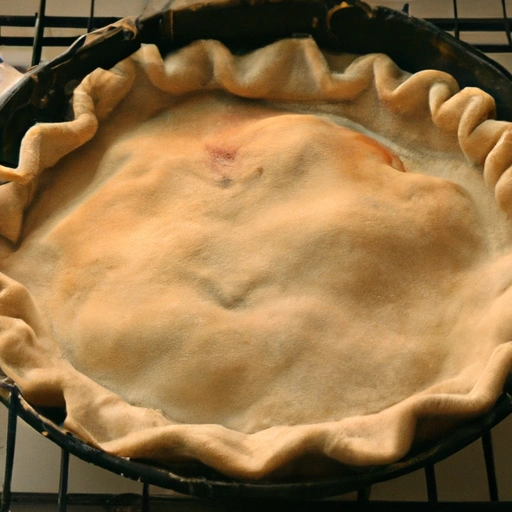Pie Crust
Description

Pie crust is a basic dough that forms the outer shell of pies, quiches, and tarts. It is typically made from a mixture of flour, fat, salt, and water. The fat used can be butter, shortening, lard, or a combination thereof. Achieving the perfect pie crust is often considered an art form, with the aim of creating a pastry that is flaky, tender, and golden-brown when baked.
In terms of measurements, a standard pie crust recipe might call for about 125 grams (1 cup) of all-purpose flour, 113 grams (1/2 cup) of butter, a pinch of salt, and around 60 milliliters (1/4 cup) of cold water for a single crust. For a double crust, simply double these amounts. In American recipes, these measurements are typically given in cups and tablespoons, while European recipes may use grams and milliliters.
Common uses
Pie crust is commonly used as a base or topping for a wide range of sweet and savory pies, including fruit pies, cream pies, pot pies, and quiches. It can also be used to make handheld pastries like pasties and turnovers.
Nutritional value
Calories
A single 9-inch pie crust typically contains around 1,200 calories, though this may vary based on the ingredients used.
Protein
Approximately 16 grams of protein can be found in a full 9-inch pie crust.
Fat
Fat content can range from 60 to 80 grams, depending on the type of fat used in the crust.
Carbohydrates
Carbohydrate levels in a pie crust can be about 100 grams, most of which come from the flour.
Vitamins
Vitamins present in a pie crust are generally from the flour and can include some B-vitamins, but amounts are not significant.
Minerals
There may be trace amounts of minerals such as iron or calcium, depending on the type of flour used.
Health benefits
Whole grain pie crusts can offer more fiber and nutrients than those made with refined flour. Using healthier fats can also increase the intake of beneficial unsaturated fats.
Potential risks
Commercially prepared pie crusts may contain trans fats, which are associated with an increased risk of heart disease. High levels of saturated fat and refined carbohydrates can also negatively impact health when consumed in excess.
Common recipes
Pie crust is used in a variety of recipes, including apple pie, pumpkin pie, pecan pie, chicken pot pie, and quiche Lorraine.
Cooking methods
Pie crust can be baked, blind-baked (pre-baked), or fried depending on the recipe requirements.
Pairing with other ingredients
It pairs well with a multitude of fillings, from sweet fruits and custards to savory meats and vegetables.
Summary
Pie crust is a versatile dough that plays a critical role in both sweet and savory dishes. Its development has been refined over centuries, making it a staple in baking traditions around the world. While it may not be a powerhouse of nutrition, when made with quality ingredients and enjoyed in moderation, pie crust can be part of a balanced diet.